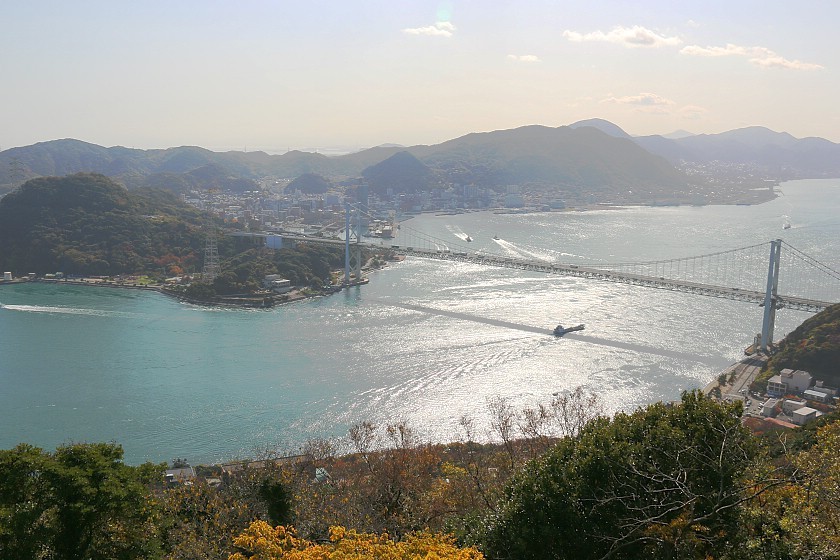Episodes from Japanese History - The Battle of Dan no Ura

A desperate naval struggle at the narrow straits separating the mainland from the northern tip of Kyushu, the Battle of Dan no Ura brought a decisive end to the Gempei War and set the stage for centuries of samurai rule.
In 1180, the decades-long power struggle between the two pre-eminent warrior households of the Minamoto and Taira had finally boiled over into open conflict over an issue of Imperial succession, with the Taira leader Kiyomori maneuvering to place his infant grandson Antoku on the throne in place of the prince Mochihito, the son of the retired emperor. Mochihito sent out a call to the Minamoto family, led by Yoritomo, but was soonafter killed in the first skirmish of the war at Uji, near Kyoto.

Despite initial successes, the Taira war effort stalled in 1181 as Kiyomori passed away from illness and a famine spread through the country. When hostilities resumed in the summer of 1183, a series of defeats put the Taira firmly on the retreat, first to Kyoto, then to their ancestral lands in the area surrounding the Seto Inland Sea. Finally, after being driven from their fortress at Yashima in a daring night attack by the great Minamoto general Yoshitsune, the Taira found themselves facing their enemy across the straits of Shimonoseki, between what are today the twin cities of Shimonoseki and Kitakyushu.
With around 850 boats to the Taira's 400 the Minamoto, commanded again by Yoshitsune, certainly had the numbers as they advanced from the Honshu side. With the experience of countless skirmishes against pirates in the Inland Sea however, the Taira under the general Tomomori would have been confident in their superior skills and had the morning tide in their favor. Neither fleet possessed anything we would recognise today as warships, but consisted for the most part of small oar-driven ferries and fishing boats.

Between the hours of six to eight in the morning, the battle began wiith a long range contest of archery as the Minamoto advanced in a single line to within 300 meters of the Taira, divided into three squadrons with their backs to the shore of Dan no Ura. By eleven, the two fleets had closed in on one another, the fight turning to a desperate struggle at close quarters with sword and naginata, as armored samurai on each side attempted to force their way onto the boats of the enemy. In one dramatic incident recorded in the Heike Monogatari chronicle, the Taira warrior Noritsune faught his way onto Yoshitsune's own boat, determined to take the Minamoto commander's head. Overmatched, Yoshitsune was forced to leap to safety as Noritsune wrestled three of his bodyguards into the sea, sacrificing himself.
It seemed that the Taira had the upper hand, until as the day wore on the tides began to reverse, pushing their boats back towards the shore. As they struggled to maintain control, Yoshitsune ordered his archers to target their rowers and steersmen, leaving many of the Taira boats spinning helplessly in the water as the enemy pressed in. Their fate was finally sealed with the sudden defection of Taira general Taguchi Shigeyoshi, who also revealed the position of the young emperor, concealed on a plain barge with other members of his immediate family.

With the battle lost, mass sucide broke out among the Taira forces. The widow of Taira no Kiyomori leapt into the waves with the boy-emperor and two of the imperial regalia, the sword and jewel, in her arms. The Taira commander Tomomori was said to put on an additional suit of armor before throwing himself overboard, while other samurai are often depicted as falling into the sea clutching anchors. In a few moments, the once-great Taira clan was annihilated so completely that superstitious local sailors would avoid the waters of Shimonoseki for years to come.
Now unchallenged, Minamoto Yoritomo resurrected the position of Seii Tai Shogun (barbarian subduing general-in-chief) and established a military government from his family base in Kamakura that would form the basis of Japan's feudal society until the 19th century. The sacred sword and jewel are said to have been recovered by divers shortly after, and kept at the Atsuta Shrine in Nagoya and the Tokyo Imperial Palace respectively. Today, the spirit of the young emperor Antoku is enshrined at the Akama Shrine in Shimonoseki City, close to the shore where he died.






